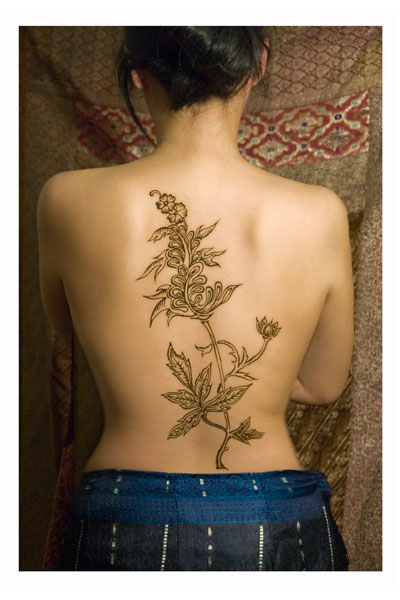

The use of henna has been around since ancient times. It is found in the middle eastern, south asian and african countries where this plant thrives. While the henna painting tradition doesn’t belong to a particular culture or religion, its significance is quite similar. It is used for weddings, celebrations, marking the rite of passage, providing temporary protections, and most of all, it is used for
enhancing beauty.
Henna (Lawsonia inermis) is a type of shrub that grows in hot, dry climates. This plant has small leaves and very fragrant flowers. Its colorant comes from the hennotannins in the leaves & twigs. When the crushed leaves are mixed with water, those tiny tannin molecules are drawn out and are ready to stain the skin. Hennotannins are small enough to penetrate the uppermost layers of skin, but cannot get into the living cells. And they only last until those layers of stratum corneum exfoliate, which could take from 1-4 weeks. Aside from its dyeing property, henna is also a great hair conditioner.
Every henna artist has their own receipe. We mix ours with fresh henna powder, water, sugar, eucalyptus and lavender oil.